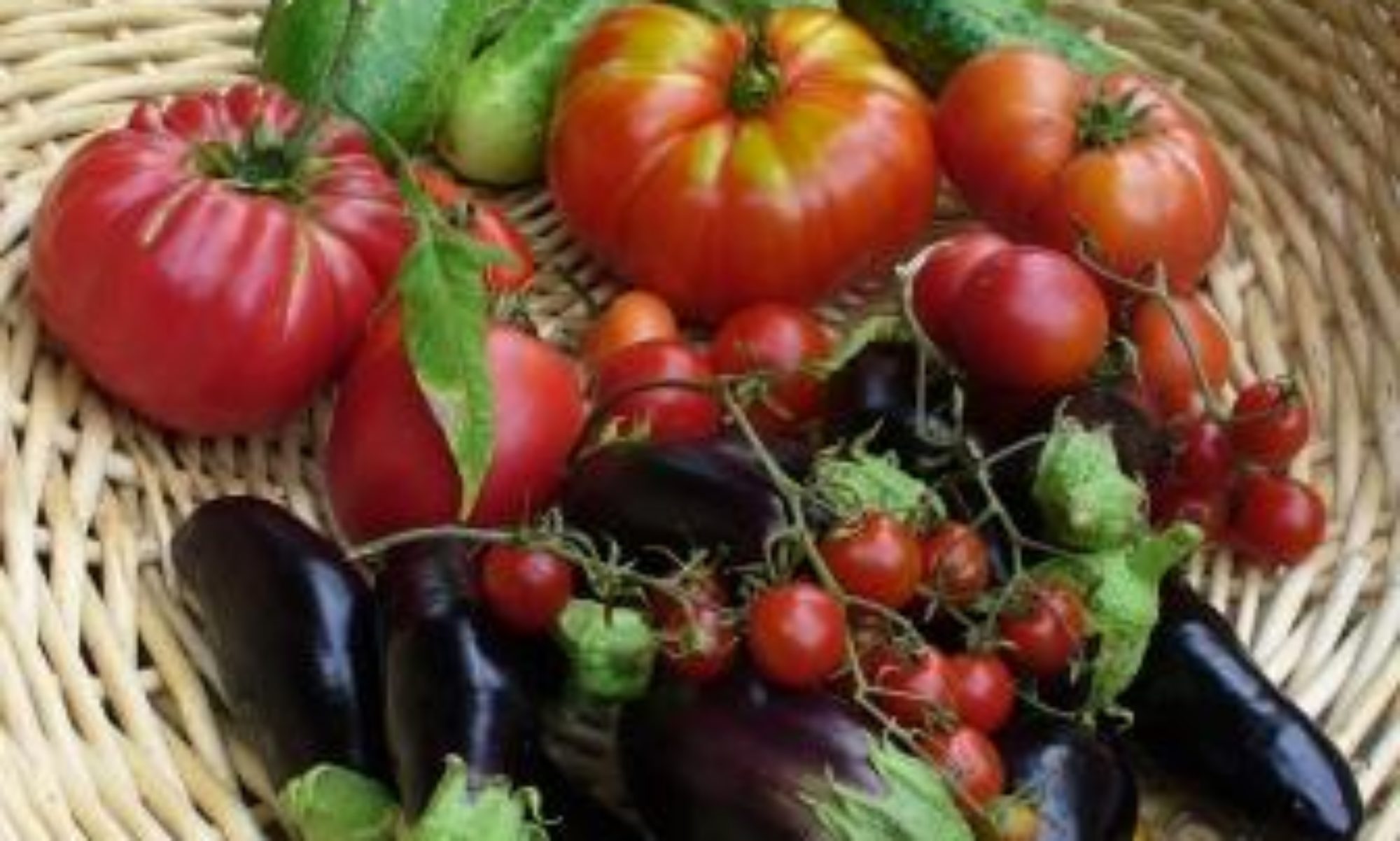The last of my tomato plants suffered fatal blight infections on September 24. I pulled out all of the plants over the week-end. Thus came the end of a truly lousy year for tomato culture. Reports are that this was the coolest summer in three decades – there were fewer days with temperatures over 70 degrees than in any summer since 1980.
Tomato blight
Blight, a fungus disease that thrives under cool damp conditions, has just appeared on a few of my tomato plants. Blight is the bane of Puget Sound tomato gardeners. Based on past experience, I know that this infection will quickly spread among all the plants, so it is likely that I can expect only another week or so of tomato harvests. Blight spores carry over from year to the next in the soil, so limiting the exposure of plants to the soil, by growing tomatoes with black plastic film mulch, will delay infection. This effect is very clear in my present garden, as the blight has appeared first on tomato vines that have wandered from the plastic-covered area onto the adjacent bare ground. Pulling out the infected plants as soon as the infection becomes apparent may slow the rate of spread a little, but nothing will stop the infection once it appears in the garden. Sadly, tomatoes picked green from infected plants will themselves turn black from blight and rot, before they ripen.
Camp Joy
Bloody Butcher
Marmande
Marglobe
Anna Russian
Debarao
Debarao is advertised as an early-ripening paste variety.
2014 However, in this unusually cool summer, Debarao set an incredibly large crop of fruit, but virtually none ripened. In contrast, I did get a few ripe fruit from other paste varieties such as San Marzano.
2015 – Aug.8 7′ vine with 30 fruit and half of these are reipe.








